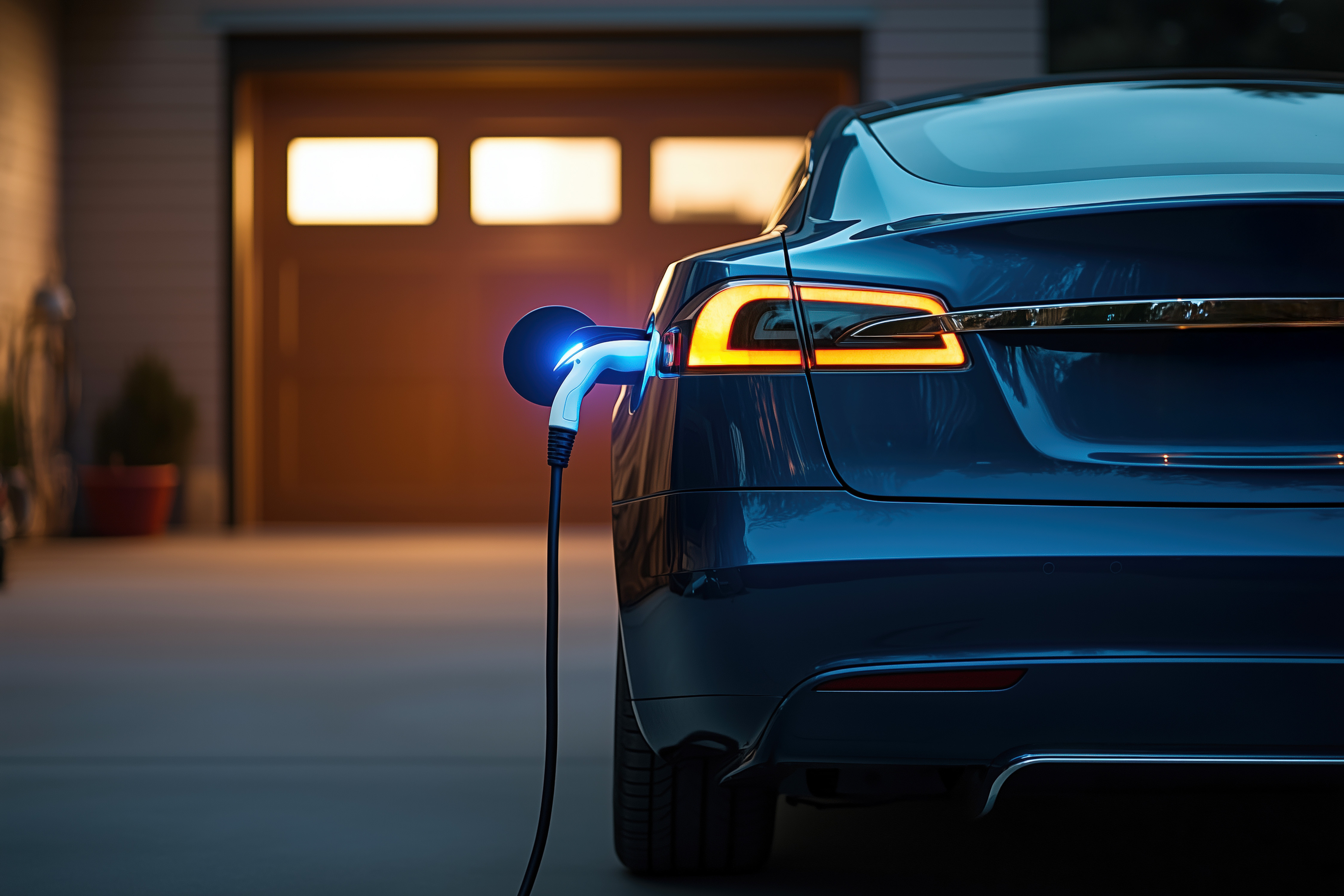If you’re looking to buy an electric car, you’re not alone. In 2022, electric vehicles (EVs) accounted for 14% of worldwide car sales, over five times as much as in 2019. This trend is likely only going to continue.
Gexa Energy is here to help you choose an EV that’s right for your lifestyle, budget, and driving preferences. Once you find the perfect fit, you can save 30% on charging* with electric vehicle plans from Gexa Energy.
*Reduced energy charges apply. Monday through Sunday from 9:00 PM to 4:59 AM.
{{CTA-EV}}
Choose EVs Based on Type (BEVs, PHEVs, HEVs)
First, it’s important to understand the different types of vehicles available. This part can get quickly confusing with the various acronyms and definitions, but we’re here to make it simple. There are three main categories of electric vehicles.
Battery Electric Vehicles
Most people think of battery electric vehicles (BEVs) when they hear the term "electric car." Their engines are completely electric and battery-powered, meaning no fossil fuels are needed. The battery packs require recharging once depleted.
Plug-In Hybrid Electric Vehicles
Hybrid plug-in cars, also known as PHEVs, offer a nice compromise between electric vehicles and gas-powered cars. Along with gas engines, PHEVs use electric battery packs that are recharged by plugging them in. When necessary, PHEVs switch to gas when they run out of electricity stored in the battery pack.
Hybrid Electric Vehicles
The hybrid electric vehicle, or HEV, is powered by a gas engine and an electric motor. Unlike PHEVs, the HEV cannot be plugged in. Learn more in our guide about choosing a hybrid car as an alternative.
Learn More: Electric Vehicle vs. Gas Car
What to Know About EV Charging
If you’re buying an electric car powered by a battery pack, make sure you have convenient access to charging. Ideally, you will have a reliable charging station at your residence or workplace.
Charging Your EV at Home
There are two types of charging arrangements you can use at home: a standard 120-volt outlet or a Level 2 charging station with a 240-volt connection.
- 120-volt connection: Adding just 2 miles of range per hour on average, standard charging can support most PHEVs with shorter ranges.
- 240-volt connection: With the capacity to add up to 37 miles of range per hour, Level 2 chargers are ideal for full EVs or PHEVs with longer ranges.
In addition to our plans to help you save on EV charging, Gexa offers Level 2 chargers and professional installation for a flat monthly fee and no upfront cost.
Learn More: How much does it cost to charge your EV?
EV Charging On-the-Go
If you don’t have at-home charging, or you’re planning a road trip, you’ll need to rely on public charging stations. You can check out our guide to Texas EV charging locations to prepare for any long drives. While many charging stations are equipped with Level 2 (420-volt) connectors, a faster type of charger is becoming more popular: DC fast-charging.
DC Fast-Charging for EVs
These stand-alone stations convert alternating current from the power grid to direct current—which is necessary for storing electricity in the car's battery—instead of relying on the car's onboard charger to do it. This drastically reduces the time it takes to charge. Instead of taking several hours, some EVs top off after just 20-30 minutes of DC fast charging.
Tesla also has its own fast charging stations called Superchargers.
Important Factors to Consider When Choosing an Electric Car
Buying electric cars doesn’t have to be overwhelming. The best place to start is with your lifestyle. Do you have a family to transport? Are you looking for a reliable commuter or high-performance speedster? Your answer to these questions will determine the best EV for you.
Here are some tips on how to choose EVs based on your circumstances and preferences.
Commutes and Road Trips: Tesla Model 3 Long Range
The Tesla Model 3 Long Range boasts a 358-mile range, one of the longest available. With Tesla’s growing network of Superchargers, you’ll enjoy fast and convenient charging. This EV is great for long-distance drivers.
Family Transportation: Hyundai Ioniq 5
As a small SUV, the Hyundai Ioniq 5 is a practical EV choice for small families. The roomy and comfortable cabin provides ample seating and storage. Comfortably transport your kids, pets, luggage, and groceries on a 220-mile range on the SE Standard Range model.
Towing and Off-Roading: Ford F-150 Lightning
This electric pickup truck may suit those looking for electric cars for 2023 with a little more heft. Ford offers the F-150 Lightning in two power configurations, with one standard-range battery worth 230 miles, and another one with 320 miles of range.
This truck has a front trunk for extra storage, as well as a towing capacity of up to 10,000 pounds to handle all your hauling needs.
City Driving: MINI SE Hardtop 2 Door Electric
With the all-electric MINI SE, the MINI Cooper continues to be a fantastic city car. Fun and easy to park, it's a great EV choice for those who don't need a lot of passenger space. On a single charge, it is estimated to go 110 miles, plenty of range for city driving.
High Performance: Porsche Taycan
With three body types and multiple specifications to choose from, the Porsche Taycan is one of the fastest and best-handling luxury EVs on the market. With horsepower ranging from 402 on the standard Taycan to 750 on the Taycan Turbo S, speed will not disappoint. Additionally, 0-60 timeframes range from 5.1 seconds to 2.6 seconds, respectively.
Upfront Cost: Kira Niro
If budget is your top priority when buying an electric car, the Kira Niro is an excellent option. The Niro is offered in traditional hybrid, plug-in hybrid, and fully electric models. The PHEV can drive up to an estimated 33 miles on fully electric power, while the all-electric version boasts a driving range of 253 miles.
Buying vs. Leasing an Electric Car
There are plenty of factors to consider when choosing to buy or lease an electric car. On one hand, leasing electric cars is common because of rapid advancements in technology. In a few years, something better may come along and reduce the value of the EV.
But leasing an electric car also has its disadvantages. Most notably, leasing can disqualify your EV from tax incentives. You may wish to buy an electric car instead to take advantage of these credits.
Final Thoughts on How to Buy Electric Vehicles
As buying electric cars becomes more popular and affordable, there’s never been a better time to go green with your transportation.
Learn more about how to power your home with 100% green energy** and save on EV charging with Gexa Energy.
{{CTA-Solar-to-EV}}






































